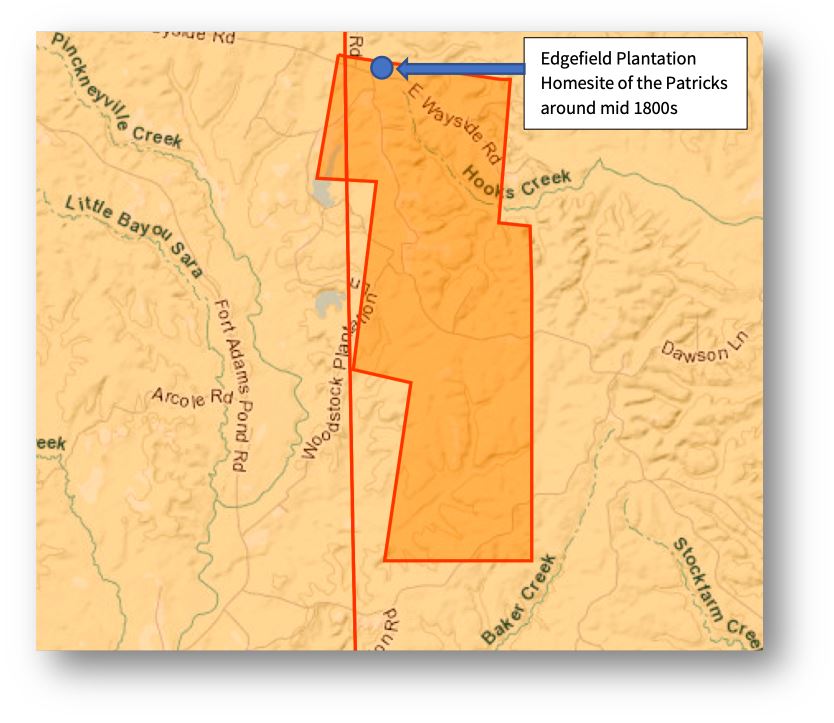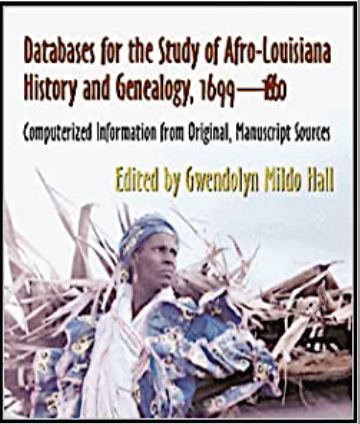Part 2. The House of Percy
A couple of years after my interview with Booker Minor in 1998, I found a book at the Southern Methodist University Library in Dallas written by Bertram Wyatt-Brown titled The House of Percy: Honor, Melancholy, and Imagination In A Southern Family (1994). The book gives a detailed account of the earliest arrival of the Percy families in North America.

The House of Percy is the kind of boring history book students reject in school. It is about the legacy of the Percy Family and their accomplishments, their honor, melancholy, and imagination, and how they prospered and left their mark in history. About how France, Britain, and Spain fought over colonization of the Mississippi River Valley until the United States was formed. Maybe a line or two mentions how Percy had “slaves” who cleared the wilderness and built the United States.
Imagine if the book told us how Percy, a colonizer and slaveowner, purchased our family members as they arrived in chains on ships from Africa, took away their African names and gave them European names, and treated them as sub-human property. Imagine if we knew their names and what the families endured as they were worked to death on American plantations. That is the history we are seeking to learn. It’s not too late to learn it now.
Charles Percy was born in 1740 in Ireland and later served in the British Army. He traveled between North Carolina and St. Eustatias, a small Dutch-occupied island in the Caribbean near the island of St Kitts/Nevis, and then to Pensacola Florida by 1776. From there he sailed into the Natchez Region, which, at that time, was called British West Florida, a colony of Great Britain from 1763 until 1783 when it was captured and ceded to Spain.
I found what I was looking for on page 28 of the book.
“As a veteran of the Royal Army, Percy was eligible for a grant of “family land,” and in 1777 Peter Chester, the current governor of British West Florida, and his Council at last awarded him 600 acres. The size of the grant suggested that he may have brought with him nine dependents, doughtlessly slaves, perhaps ones brought with him from North Carolina or from St. Eustatius. The track was located on the right bank of Bayou Sara, near a settlement later called St Francisville, not far from the border that later separated the future American states of Mississippi and Louisiana.”

“In 1779, Percy petitioned the governor for yet another tract. Later through an American marriage, he acquired still more property near Opelousas, St. Landry Parish. There he raised large herds of cattle. At intervals he sold the livestock on the New Orleans market for the West Indian trade. Thus he eventually came to hold three plantations, one near St. Francisville (Louisiana) on Bayou Sara, which he called Abluses, another at Opelousas, and the third, his residence, which he called Northumberland House, on Buffalo Creek. His chief area of concern became the Buffalo Creek landholding. The property was located about six miles east of the Mississippi, not far from an old French redoubt whose name under British authority was Fort Panmure. It was fifteen or so miles below Natchez, in the future Mississippi County of Wilkinson.”

This is the written account that backs up the oral history that was passed down by generations of Black Families on Edgefield Plantation and on to Booker Minor.
A small portion of Percy’s Wilkinson County lands included the site that would later be called Edgefield Plantation, north of Woodstock Plantation on Wayside Road in Woodville.

Percy, like many of the British soldiers and United States Revolutionary War soldiers, were given huge acres of land for participating as agents of war and colonizers for the European nations. Once they received these large tracts of other native people’s land, they turned to chattel slavery to provide free labor for their profit and wealth. They began buying African captives and conditioning them through physical, mental and psychological terror to work the land “for life.”
A census for the Natchez District (then occupied by Spain) that was taken on June 14, 1792 listed the Charles Percy family household of 6 people, with 4000 arpents of land (3300 acres) and 22 slaves – 19 black and 3 mulattoes.
It is estimated that Percy came into Wilkinson County with 9 enslaved Africans. Based on his travels, they were possibly brought from either North Carolina, the island of St Eustatius, Pensacola, Florida or New Orleans. Where did he purchase the rest of the men and women to work the land and build these Plantations?
Gwendolyn Midlo Hall created and edited the Databases for the Study of Afro-Louisiana History and Genealogy, 1699 – 1860 (2000), as a companion to her book Africans In Colonial Louisiana: The Development of Afro-Creole Culture in the Eighteenth Century (1992). The searchable online databases were compiled from English, French and Spanish documents and provide details of enslaved Africans from Senegambia and Central Africa as they arrived on the shores of colonial Louisiana.

A compilation of Percy’s transactions taken from the Databases for the Study of Afro-Louisiana History and Genealogy lists Africans he purchased as they arrived on ships from Africa, or after a brief stop in the Caribbean Islands. Charles (Carlos) Percy purchased a total of 9 enslaved Africans from New Orleans and Baton Rouge slave traders during the Spanish period.
- 1 child (no name listed) – newly arrived from Africa into New Orleans on a ship named San Josef; ship Captain Jayme Badia; which stopped on the island of Martinique. Purchased from slave trader Narcisco Alva.
- 4 African males – Hamlet (born around 1762), Cato, Dick, and Apolon, who were newly arrived from Africa and previouly owned by Percy’s Woodville neighbor Francis Pousset. Purchased from slave trader Laclan McNeal.
- A family of 3 — Catto, Sarah and their son Mayor. Bought from the George Proffitt Estate sale in Baton Rouge.
- A 22-year-old man named Marcos (born around 1771). Purchased from slave trader Jaun Mapother.

In January 1794, a “melancholy” Charles Percy committed suicide by tying a large pot around his neck and jumping into a nearby creek in Woodville. All the folks from Woodville are familiar with the name of the creek, and the part of town now known as Percy Creek.
Unfortunately, the Plantation records of Charles Percy have never been found. Fortunately, Percy left a will. A will that would require the detail inventory and distribution of his most valuable property -– the African men, women, and children, whom he enslaved.
Next: The Founding Black Families


More facts about the area I lived in and traveled throughout my life. Edgefield and Woodstock plantation is where our ancestors were born and died in slavery. Traveled and visted many family and friends on Percy Creek. Now, I know how. Percy Creek got its name.
Jackie I know Percy Creek will never be the same to you. Thanks for reading.
The post gives a perspective that is rarely presented in conventional history. Specific facts and events of a community is appealing and informative. This is a great blog article.
Mr. Canady, as always, thanks for your support.
Excellent read! A real showcase for your years of research, the techniques you use and your passion for the content.
Thanks Brenda.
Thank you Alvin for your diligent and tireless research on the Percy family. My sister located, on the internet, a compilation of information about the Percys entitled “The Percy Family of Mississippi and Louisiana 1776 – 1943”. I was able to trace my paternal Great-Grandfather to Anthony Doherty Percy, born August 16, 1870 and died March 9, 1915. What I found interesting was that around the 1840s some family members started using the name Chaille in place of Charles. Continue your GREAT RESEARCH!!!!
Thanks for reading Gwen. There is a lot of information written on the Percys. There is nothing but the word “slaves” written about our families. The narrative of this blog is the humanity and unwritten history of the early Black Families.
Thanks cousin Alvin for the research. I am forwarding to immediate family members.
Hey Elton. Thanks for reading.
What an excellent read! The details are none short of fascinating! Your research of the Percy family is thorough and personal. As the reader, you’re providing a vivid and factual context that helps me have a clearer understanding of the time period! Thanks for broadening my own historical precepts! I can’t wait to learn more!
Gwen thanks for reading and commenting. And yes, it is personal. Self-knowledge is critical for our well-being. The history books have relegated African Americans to the category of “descendants of slaves.” But we had a history (names, families, & culture) – before, during, and after the trauma of “slavery.”
Can’t wait for the next post! Thanks, cousin.
Thanks Monica.
Interesting read brother Alvin! I’ve heard all my life many of our family members referring to Percy Creek. I now understand the significance of this area. Question: what is the U.S. equivalent to a piastro?
Thanks for sharing this amazing research Alvin. Love your blog. It’s a morbid, moot detail but the Percy suicide tendency caught my attention since I may be related to a descendant of Sir Henry Percy, 1530-1585, who also allegedly committed suicide (pre-colonial Percy line).
Thanks for reading Diana. The storyline on Charles Percy commiting suicide is there to introduce the naming of the town of Percy Creek in Woodville, MS. The mental (melancholy) issues of the Percy family is well documented by the descendants. In fact, it comes up again in my next blog.
I had been meaning to read your blog for months. You made a comment on my finding eliza blog today and here I am. Such good work! Reading your interview with your cousin made me wish again that I had interviewed my family members back in the 1960s. So much information gone.
Kristen, thanks for reading. Your outstanding blog has always provided inspiration for me.
Would never have known our family purchased land from Mr. Percy if I hadn’t stumbled across https://www.lib.lsu.edu/sites/default/files/sc/findaid/4581.pdf.
thanks for completing the circle’ ; we were lead to believe the land originated in a Spanish land grant to (Our family) which is not the case. Mr. Percy even supplied through business the help we needed to build the family-house ;which was occupied into the 1930’s and burned down in the 1950’s due to “hay”being stored inside ,there are plenty of pics of the house online
Thanks for the reference. This never came up in my search for Percy documents at LSU.
Does anyone know the original indigenous name for Percy’s Creek? I’m told the original indigenous name for Hay’s Creek translated means Giant Creek.
Percy’s Creek?
No. I have never heard of the indigenous name for Percy’s Creek.
Thank you Mr. Blakes for your informative research. Your research has introduced me to some crucial facts about the area of Woodville as I dig deeper into the roots. Woodville is my home and as most of us, I have an extended family history which I desire to know more about. Thank you.
Thanks for reading. Let me know if I can help you with your research.
This is fascinating work, Mr. Blakes!
Thanks Stacy.